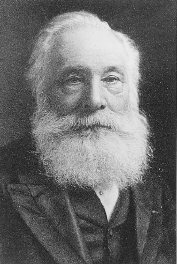- Dissolve 15 cm3 of phenylamine in a mixture of 40 cm3
of concentrated hydrochloric acid and 40 cm3 of water
contained in a 250 cm3 conical flask.
|
- Why is phenylamine soluble in hydrochloric acid?
- Phenylamine is a base, and reacts with acid to give a salt. This is
ionic and is much more soluble than the free amine:
C6H5NH2
+ HCl → C6H5NH3+
+ Cl- |
- Place a thermometer in the solution, immerse the flask in a mixture
of ice and water, and cool until the temperature of the solution reaches
5oC.
|
|
- Dissolve 12.5g of powdered sodium nitrite in 30 cm3 of
water, and add this solution in portions of about 2 - 3 cm3
to the cold solution of phenylamine hydrochloride, keeping the latter
well-stirred by means of the thermometer. A short interval should be
allowed between successive additions; the temperature must not be
allowed to rise above 10oC, nor below 0oC.
|
- Why don't you use nitrous acid itself rather than making it in
situ?
- Nitrous acid decomposes rapidly at room temperature and is always
made as it is needed. It is a pale blue solution.
- Why is the short interval between additions needed?
-
The reaction between nitrous acid and the
amine salt is quite slow at the temperature used; the reaction is
exothermic, so too fast an addition might lead to thermal runaway and
the temperature may rise above 10oC.
-
What happens if the temperature rises
above 10oC?
-
The diazonium salt will react with the
solvent water to give phenol, C6H5OH. This will
then couple with unchanged diazonium compound to give an orange
compound.
-
What happens if the temperature falls
below 0oC?
-
The reaction becomes very slow and
diazotisation does not occur.
|
- The solution of benzenediazonium chloride must be used immediately
in a further synthesis; it cannot be kept for more than a few hours even
in a freezer.
|
|

